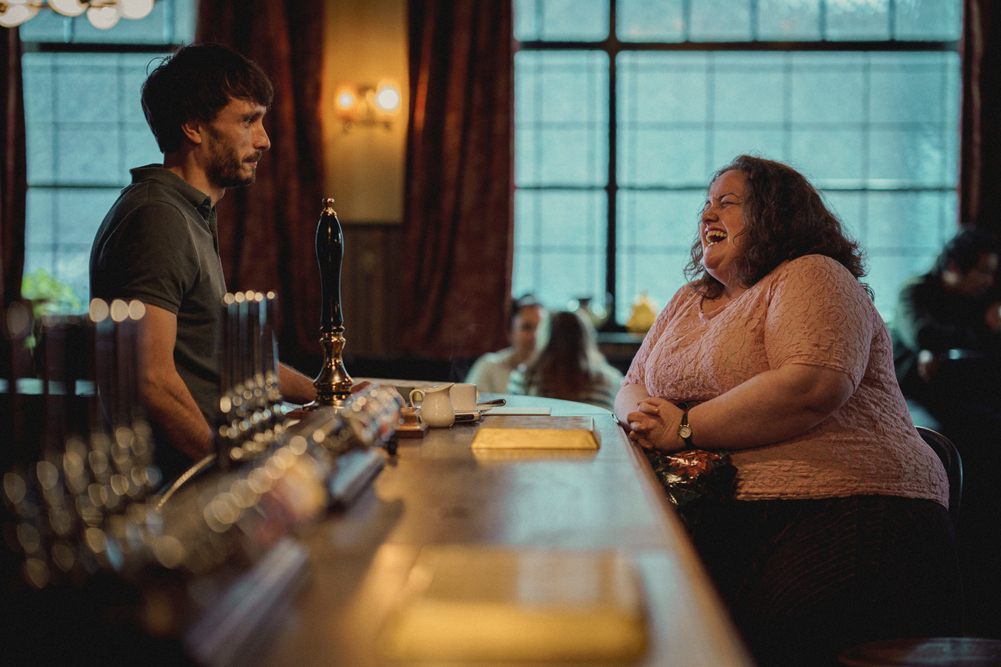
“The crew was emotionally affected by his and Jessica’s performance,” says Baby Reindeer production sound mixer Jake Whitelee about Richard Gadd’s portrayal of Donny Dunn, a struggling standup comedian moonlighting as a bartender whose life chaotically spirals out of control after meeting Martha (Jessica Gunning), a pathological liar and stalker. Created by Gadd, the bingeable Netflix drama is based on his own life experience with a stalker which explores a complicated subject matter through a harrowing lens. Both actors received Emmy nominations with the show receiving 11 overall, including best limited series. “In the middle of all of it,” Whitelee continues. “Richard cared about our well-being and would stop and talk with members of the crew on set, which is incredible, I think.”
The former sound engineer turned production mixer has been honing his craft since the early aughts, working on over 100 different projects since. Landing Baby Reindeer was a once in a career opportunity. “When I read the script I was hooked, and I knew the project was something I really wanted to work on,” he says. “And because there are a lot of themes and issues on the page, I wanted a sound team who was sensitive to that.” Whitelee, along with boom operator Joanna Andrews and 2nd assistant sound Rajan Thandi were tasked with recording the location audio of the deeply disturbing, albeit beautifully charged story that was shot in parts of London and Edinburgh, with the stage work at OMA Studio Group.
Below, Whitelee shares how he mixed the dialogue-driven series, talks about his favorite scene in the show, and how Zaxcom technology helped make it all possible.
First, congrats on the success of the show. Did it surprise you how well it’s being received?
I didn’t know if it’d be this big. But I thought it would do well because it touches on things that a lot of people experience… trauma, insecurity, and self-doubt. It’s all these things everybody’s battling with on some level. It’s great to have been a part of something which is ultimately trying to have a discussion about issues that either matter directly to people, or will definitely start new conversations.
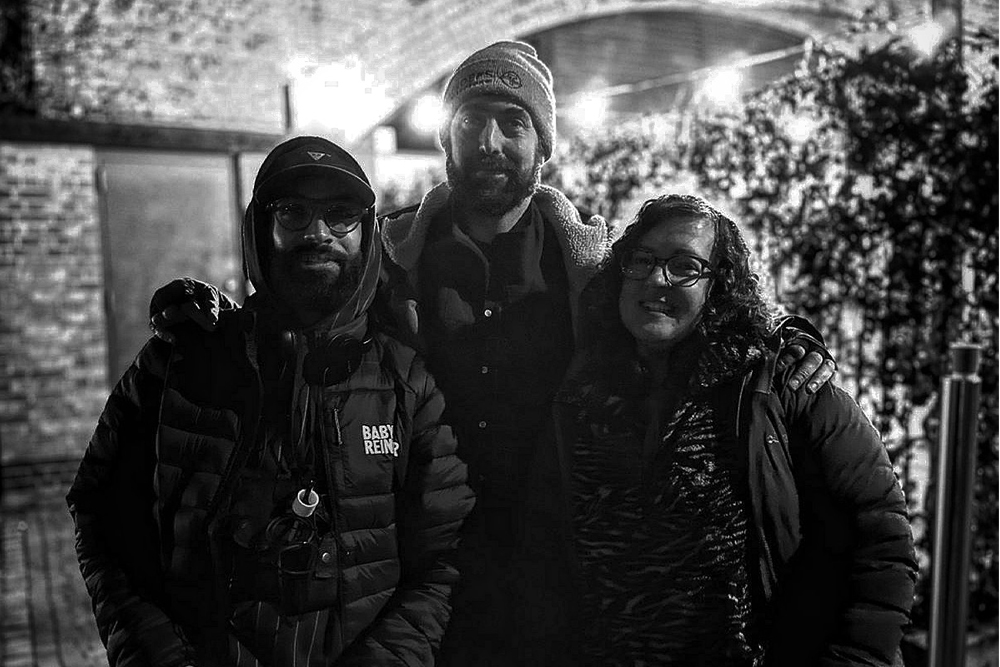
Did your sound team have a specific approach to recording Baby Reindeer?
It wasn’t about going in and getting lost in being obsessive about the most technically beautiful sound, but preserving the space for the actors, and sort of being unobtrusive. We felt like it was more our role to document and record the performance than trying to change what’s in front of the camera. For me this is the real challenge. If you have to change the moment to get the sound, I feel we have lost. We do the work so that moment sounds good without changing it, that’s when we have done our job. So, we let the actors act, the DP shoot, the grips lay track, and let everybody else do what they have to do. You’re almost mimicking what the lens is doing. You’re not changing what’s happening, you’re getting every detail of it by just being very well prepared and having good clear image of what you’re recording.
How did you connect with boom operator Joanna Andrews?
We’re friends with a lot of the same people and both members of the Association of Motion Picture Sound (AMPS), so I’d seen Jo around but never worked with her. But when we got to talking about Baby Reindeer, I felt Jo was great was because she really had a connection to the script. She wanted to do it, and wanted to be involved. She was like, this is something I really want to do. And Jo was brilliant on this show. She’s very confident and capable. But more importantly, she was sensitive to the themes and issues on the page.
Did you encounter any concerns on the tech scouts?
I couldn’t actually do the tech scouts, but Joanna did and her notes are very comprehensive. They were some of the best tech notes I’ve ever seen somebody do. It was like I’d been there myself, because she was so on top of everything. And with Joanna going on the scouts she already knew what we were up against going in. That’s so important because on that first day you want production to trust the sound recordist, so we did the prep and were very aware of everything that could come up.
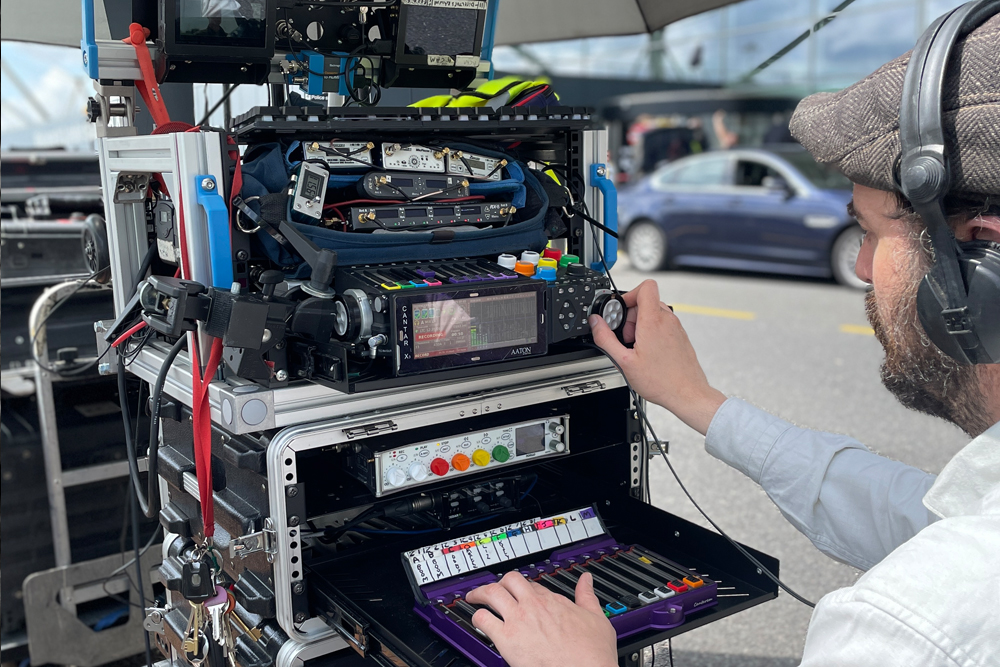
For the gear fans, what was your cart setup for the series?
I have a Cantar X3 and below that a Zaxcom Nomad 10. I have ZaxNet routed through the Cantar into a Dante network and into an IFB transmitter so I can keep remote control on all the Zaxcom transmitters wherever we are. Then for wireless, the Zaxcom RX-8 with Dante, RX-4, 2 QRXs, a MicPlexer 2 and Wizzy LFA antennas all on Dante into the Cantar X3. On the transmitter side, its Zaxcom ZMT4s and ZMT3s for bodypacks and the TRX743 for wireless boom.
Any reason you prefer using Zaxcom in your workflow?
Zaxcom has made some incredibly small, incredibly good sounding radio mics that are very reliable. And you can fully remote control and internally record. These are all tools that help us stay in control and be ahead of issues that raise the bar in terms of the quality of what we record, they are invaluable game-changing tools. Because TV is so fast, it’s important for me to always have a radio on somebody in case there’s something wrong with the acoustics of the room or framing/lighting that make optimal placement of the boom impossible. The boom is always the first and best tool, but having outstanding radio mics makes the gap between the sound of a lav and boom smaller. And since our booms are wireless too, it’s even more important for the boom mics to sound the best they can.
With Zaxcom, it sounds like we are on a wired cable, which is great, especially when people are going from actors whispering very quietly to possibly screaming incredibly loud. Because the Zaxcom wireless can deal with shifts in volume, it’s not going to overload when it’s right on the actor.
What mics did you want to pair with the Zaxcom wireless?
Most of the lav work was done on DPA’s. We had Schoeps CMIT-5U or CMCs for boom and also the Sankin CS-3e, which is a mic I am using more and more lately. We used the CMC in problematic rooms that are reflective. We do have to have additional mics in our kit for the crowd stuff. In the venues, I use a wide mono pair of mics made by Swedish company called Line Audio Design, they are very good for effects.
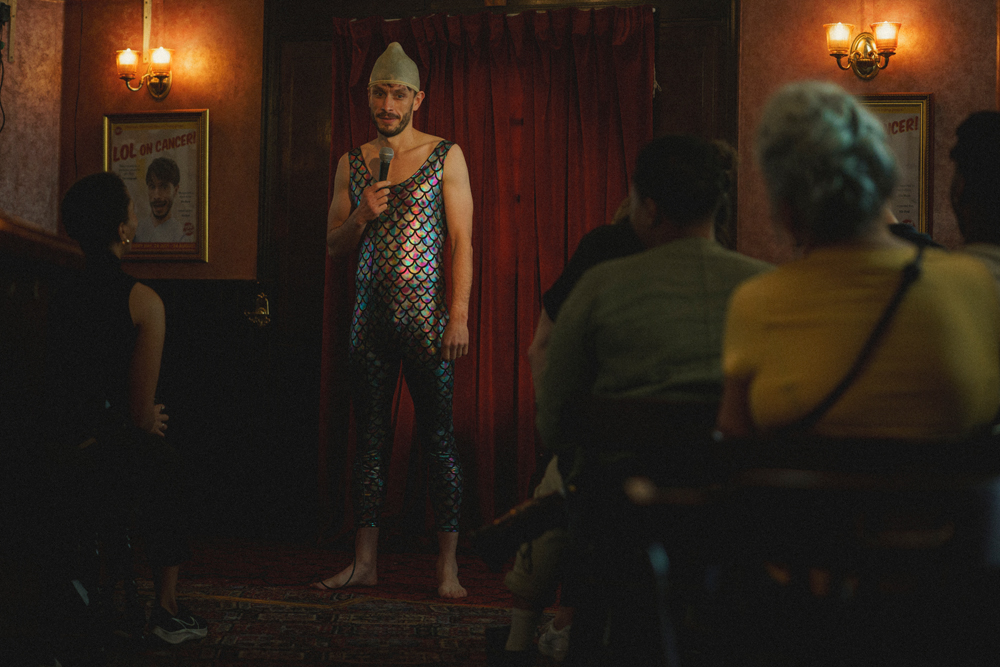
We get to see Donny perform standup comedy in several of the episodes. How did sound record those performances?
One of the first things I was taught is to use everything. If you can put a mic up and it’s not going to hold you up and it’s not going to stop something happening, do it. If someone’s holding the mic in their hand, make it practical. So every time we had someone holding a mic, we’d speak to the props team and they would let us know which mics they had available.
We would put the stick mic on a cable but the cable would be going into a Zaxcom TRX743 transmitter. Then Richard would also be wearing a Zaxcom wireless transmitter with a microphone. We also had all the audience members who would be shouting things on wireless microphones. Then Joanna would try to cover things with the boom. Then I would mix all that together.
During Donny’s standup he uses audio gags as part of his act. Did you have to setup any playback cues for the timing?
We had a few sound cues because Richard wanted it to feel like it was from his original standup act. We set it up so when he pressed the button on stage we would hit the playback cue that would play through the speaker. Then he would react to it. That was sort of one of the trickier things you had to do to try and get the timing just right. And it may seem like a little thing but Richard was big on detail and wanted it the way he remembered it. It was an authenticity thing which we wanted to re-create for him in the best way possible.
One of the more climatic moments in the series is when Donny opens up about his tragedy on stage in episode six. How did you want to treat that moment?
That particular scene was shot in the Rivoli Ballroom in London. It’s an old period ballroom that’s covered in red velvet. That scene has all of Richard’s soundbites from his original show, so we had somebody with a laptop with a closer eyeline to Richard’s performance on stage playing the sounds that were all coming back to me on Dante. I’d hit the playback cues through the speaker. It was all about the timing.
How did you approach Darrien’s (Tom Goodman-Hill) apartment scenes where Donny is taken advantage of?
We went from the point of trying to be sensitive to the space and to try to not get in the way. We didn’t want to be in a situation where we have to stop in order for the scene to work better. We had speakers set outside the room to play in the music when Darrien starts dancing, which is both comedic and terrifying at the same time. We ran an induction loop on set and gave Tom [Goodman-Hill] an earpiece to pop in so when the dialogue came in we didn’t have to ADR anything. We would just drop the speaker out but the music could keep going.
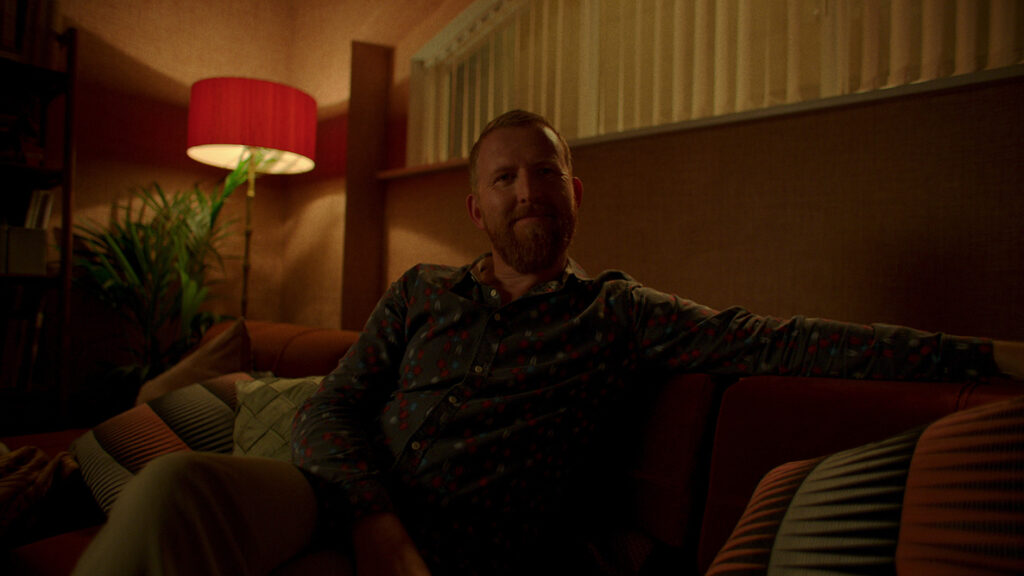
Did you do anything technically different for Darrien’s apartment scenes?
We did record two ISO tracks, one regular and one safety track. The regular track was uncolored and unchanged and we had the gain set so it was not in danger of clipping. Then on the safety track I stuck a compressor so I’d know we’re safe and uncompressed and not in danger of it clipping because of the music.
We went in never wanting to do wild tracks of that scene because it wouldn’t capture the emotional tone. We didn’t even want them to have to go again for sound. I think the whole crew got through those scenes in a way where you knew it’s going to be a tough performance day and you didn’t want to have to ask them to do it again.
There’s a heartbreaking scene when Donny confesses to his parents what happened to him. What was your reaction filming that tear-jerking scene?
That’s one of my favorite scenes because it was such a powerful moment. The performances are so incredible in that scene and the connection between those three cast members is great. I felt really emotional shooting it.
Did you have any part of all the voicemail recordings that Martha (Jessica Gunning) was leaving on Donny’s cellphone?
Those were all handled by post. But one of the first days I met Richard we sat in a room with him and he read all his narrated parts. They didn’t use them in the final mix but we used them for timing and I thought they could be possibly played back on set, but in the end, this worked better having an AD read in. However I think they became useful in how they structured the edit for the first three or four episodes.
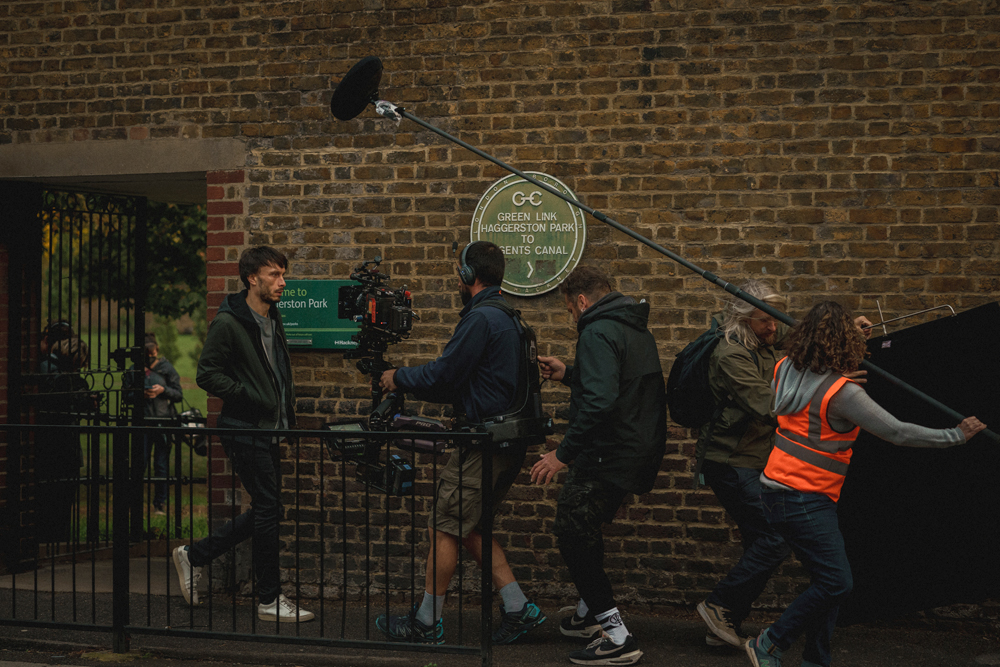
Looking back, what are your thoughts on working on the emotionally tuned series?
It’s always been the dream of mine, I think, to work on a TV show like this, which is a script I really loved and outstanding performances. The script is all about the actors just being in a room acting. There’s no explosions, there’s no helicopters, nothing like that in this show. It’s all just people interacting in the room, and I think that’s sort of a dream job, you know? That your sound is helping drive the show and what you’re concentrating on is being a part of that. Because in many ways, as a sound mixer, you’re not necessarily having to be that creative, except in your problem solving, so it’s nice to feel like you are involved in the performance and what’s going on.
And I don’t think you really look back and say, ‘my recording of that was great, I feel really good about it,’ though I am really proud of the recordings we made for Baby Reindeer. But it’s actually the fact that I got to work on something that, I know it’s a cheesy thing to say, that I believed in. The show did affect me. I got very emotional on set at times, it’s hard not to, it’s incredible.
Before we let you go, care to share any advice for readers?
To quote a U.S. mixer, he said, “One of the most important things a sound recordist can have is the right personality.” And I think that’s very true. The relationships you have with other people become more important than how much you know about the gear, which is ironic, because I’m quite a gear-orientated person. You shouldn’t be worried or obsessed about the kit, you should be engaging with the people you are working with and the only role the kit should really have is to support that.